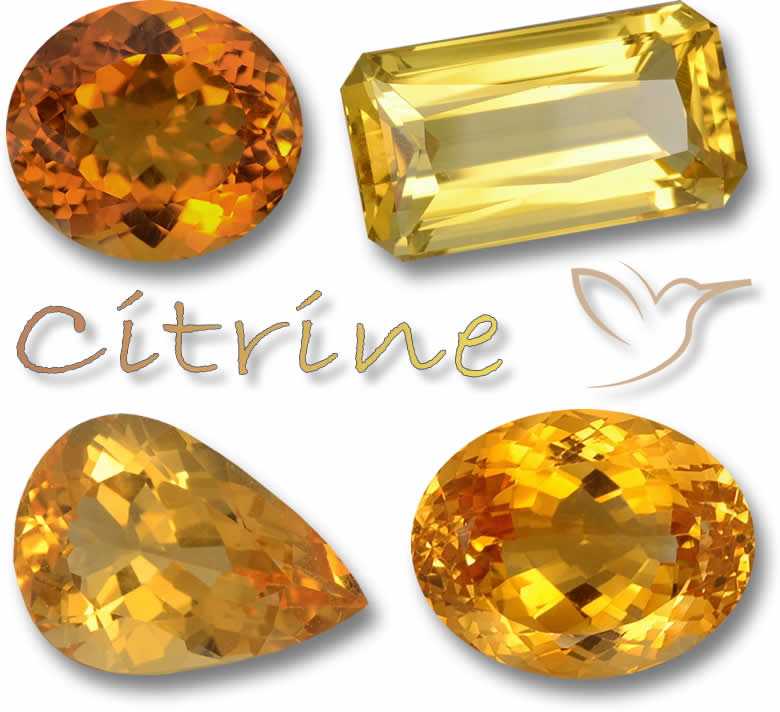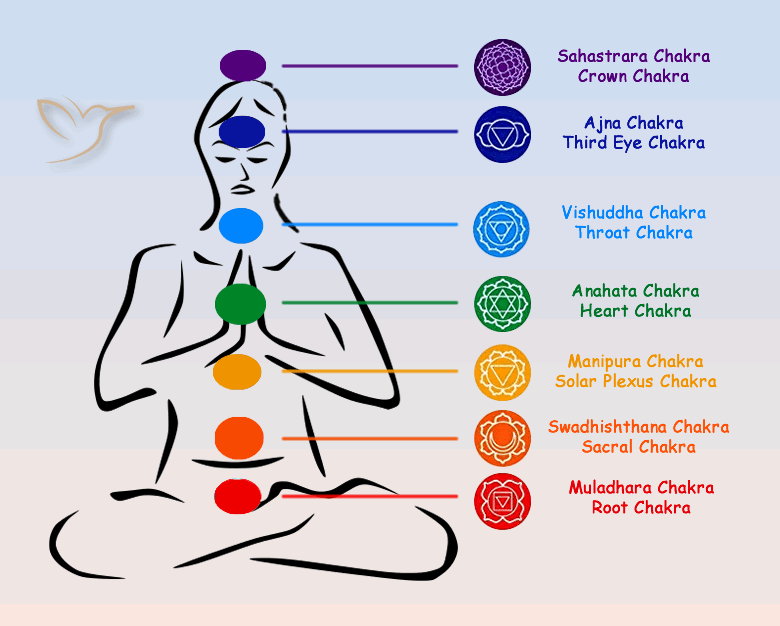Citrine Gemstone Information

Introduction
Citrine stands out as one of the most sought-after gemstones on the market today. It falls within the extensive quartz gemstone family.
Think of it as the yellow sibling to purple amethyst - they're closely linked. The key distinction between these quartz relatives lies in how their iron impurities oxidize.
Citrine is essentially quartz, the second most abundant mineral in Earth's crust, composed of silicon and oxygen that forms in various rock types. You'll find other quartzes like amethyst, blue quartz, cactus quartz, chalcedony, rose quartz, and smoky quartz. As liquids cool in rock fissures, they form crystals, and when specific minerals combine, they create those colorful varieties.
- Spanning from pale straw to deep earthy browns, often likened to a burst of fall sunlight
- Citrine serves as a gemstone that can light up anyone's mood
Citrine Colors

Citrine is fundamentally a yellow quartz, with shades varying from soft lemon yellow to rich earthy brown, including appealing oranges along the way. A more intense color boosts its value, especially with uniform tone across the stone.
The top-valued citrine hue is typically a deep reddish-orange, mainly from Brazil, though Uruguay produces some standout vibrant pieces too. The golden-orange to almost reddish-brown Madeira Citrine represents the most desired tone. Fire Citrine refers to heat-treated citrine from Brazil's Linha Estefania Mine, noted for its bold red-orange shades.
Here's where it gets a bit tricky: natural citrine holds higher value than treated versions, but it rarely appears in those intense reddish-orange tones. So, sometimes a natural pale yellow citrine with excellent clarity and cut fetches a premium price.
Citrine Varieties
Citrine belongs to the quartz group, and its names often stem from color differences. Here are some well-known types:
- Yellow Citrine - A lemon-like yellow, occasionally termed Lemon Citrine
- Golden Citrine - A rich golden yellow
- Madeira Citrine - Ranges from golden orange to reddish brown
- Fire Citrine - Trade name for deep orange shades
- Palmeria Citrine - Vibrant orange tones
Keep in mind: Lemon Quartz isn't citrine! True Lemon Quartz is regular quartz irradiated to achieve that sunny lemon hue.
Citrine Clarity
For most gemstones, greater clarity means greater worth. Since citrine is a common quartz, you shouldn't settle for less than eye-clean stones - no obvious flaws or cracks visible without magnification. Citrines are generally very transparent, so color uniformity matters a lot. Unless it's ametrine (a mix of amethyst and citrine), your citrine should show consistent color without zones or shifts.
Citrine Cut and Weight
Scoring a 7 on the Mohs hardness scale, citrine can take on nearly any shape. Its abundance in large sizes and low cost inspire creative, attention-grabbing fancy cuts. You know, those unique designs that really stand out.
What Does Citrine Symbolize?
Citrine often links to abundance, prosperity, and achievement. Many believe it harnesses solar energy, infusing warmth, joy, and optimism into daily life. It also sparks creativity, drive, and personal expression. Learn more about citrine meaning, powers and uses.
Citrine crystals range from yellow to orange and reddish brown, ranking among the world's favorite quartzes.
The name citrine derives from the Latin 'citrus' and French 'citron,' simply meaning lemon.
Its sunny shade suggests it embodies the sun's power, offering vitality, energy, warmth, and delight. We all know sunlight shortages - and the vitamin D dip that follows - affect people globally amid hectic urban routines. Citrine can uplift your energy and mood, like basking in sunlight for a day.
Dubbed the 'Merchants Stone,' citrine is said to boost business and earnings, aiding in gaining and retaining wealth!
Try placing a crystal in your cash register or safe to draw in more trade. Stock traders, take note: citrine might assist with financial risks and ventures.
For career folks, citrine proves helpful. It enhances client interactions in fields like sales, finance, entertainment, or healthcare.
At home, it fosters family bonds, draws love and joy, and wards off hostility or jealousy. As a stone of forgiveness and optimism, it helps heal from heartbreak. A sizable citrine crystal in your space can illuminate it both literally and figuratively.
Citrine invites love and openness to new connections. It encourages accountability and dedication for enduring, fulfilling relationships.
To tap into its vibrant energy constantly, wear it as jewelry - a bracelet or ring works, but a necklace shines since it rests near the solar plexus, citrine's chakra.
Which Chakra Is Citrine Good For?

Chakras are your body's energy hubs, known as Qi or Prana. Seven chakras influence physical, emotional, or mental states.
The seven chakras include Crown, Third Eye, Throat, Heart, Solar Plexus, Sacral, and Root. 'Chakra' means 'wheel' in Sanskrit.
Briefly: Crown connects to the divine at your head's top. Third Eye handles intuition between your eyes. Throat aids communication. Heart deals with love in your chest center. Solar Plexus boosts confidence in the upper abdomen. Sacral manages pleasure below the navel. Root addresses career and security at your spine's base.
Chakras can imbalance or block, needing alignment. Chakra stones, colored to match - red for Root, orange for Sacral, yellow for Solar Plexus, etc. - help.
Citrine, a near-perfect yellow crystal, ties to the Solar Plexus Chakra, your power center. It bolsters willpower, creativity, prosperity, and shields from negativity.
Here's how: Place citrine on your upper abdomen, relax, visualize its color, and absorb peace. Afterward, cleanse in saltwater and dry under sun or moon.
Health Benefits of Citrine
Citrine offers believed benefits for body and mind, like energizing vitality, bolstering immunity, sharpening focus, and fostering positivity.
Linked to the Solar Plexus, citrine aids your core area - urinary tract, kidneys, glands like pancreas and spleen, adrenals, reproductive organs, and lower back. It eases digestive issues, including constipation.
Pair citrine with essential oils for massages. The stone energizes oils, boosting circulation for better skin, reducing cellulite, easing muscles. Such massages help sleep issues too.
Citrine Prices
Citrine Price List |
||
| Color | Weight range | Price range / USD |
|---|---|---|
|
Light Color |
1ct |
$10 - $25/ct |
|
Medium Color |
1ct |
$15 - $35/ct |
|
Deep Color |
1ct |
$20 - $60/ct |
|
Light Color |
10ct + |
$10 - $30/ct |
|
Medium Color |
10ct + |
$15 - $40/ct |
|
Deep Color |
10ct + |
$20 - $70/ct |
Citrine has long been appreciated, and with trends favoring earthy and sunny shades, its popularity surges. Yet, it remains affordable, even for stunning large crystals.
Color drives value most - vibrant yellows to oranges, reds, browns with even saturation command top prices. Clarity, cut, and carat weight factor in too.
Deep red-orange, like Madeira or Fire Citrine, tops the value chart.
Lighter shades cost less, but natural untreated citrine can fetch more than treated darker ones.
Is citrine pricier than amethyst? They're essentially similar - yellow vs. purple quartz - with comparable prices. Natural citrine's rarity edges it up, but heat-treating amethyst for citrine keeps costs close, depending on color depth, clarity, and cut.
Is Madeira citrine natural? The prized Madeira Citrine, named for wine's hue, not the island, often comes naturally from Brazil in deeper golden-orange. Some heat-treat to mimic it, but authentic versions are untreated.
For more details on how much is citrine worth today, check our guide. If you're looking to purchase, explore our comprehensive citrine buying guide for tips.
Citrine Discovery
Citrine adorned jewelry and decor for ages, known as yellow quartz in Greek and Roman times. In 1556, mineralogy pioneer Georg Bauer named it citrine, drawing from 'citrus' and 'citron' for its lemon-like color.
Can Citrine Be Treated?
Mentioning 'natural citrine' sparks debate. Some argue all citrine starts as heat-treated amethyst; others say only certain shades are. Does treatment matter?
Heat-treated citrines exist on the market, fine if labeled. Nature also produces gorgeous yellows and oranges through minerals, time, and volcanic heat.
What Jewelry Is Citrine Suitable For?

With a Mohs hardness of 7, citrine suits everyday jewelry. Large crystals allow fancy cuts like concave, wasting material but yielding unique pieces. It handles classic cuts well, highlighting color and sparkle.
It's tough for daily use, but dodge hard knocks. Store separately to prevent scratches from harder or to softer gems.
Citrine offers yellow shades from straw to brown at budget prices, in diverse shapes - your creativity sets the limit for jewelry.
When mounting, metal choice is personal, but citrine's yellow pairs nicely with white gold or silver. For specific insights, read about the meaning and benefits of citrine rings.
Is Citrine a Birthstone?
Yes, citrine is November's birthstone, promoting calm, wealth, and warmth. It's Libra's zodiac stone and marks the 13th anniversary. Citrine jewelry spreads positive vibes, making it a great gift for November births or Libras.
How Is Citrine Formed?
Citrine, quartz from silicon and oxygen, forms in geodes worldwide, like amethyst. Geodes arise from bubbles in volcanic rock or lava, hardening outside while interiors fill over eons with silicon-rich fluids (plus iron for citrine), crystallizing into beloved quartzes. Sizes vary from tiny to cavernous.
Did You Know? Interesting Facts About Citrine
- The largest citrine weighs 2258 carats
- From Brazil, displayed at Washington's Smithsonian. It's massive - 100 times jewelry-sized.
- Ancients wore citrine against snake venom and evil thoughts.
- "The Stone of Success"
- Chinese legend says give it to generous folks. Emperors wore it for intellect and open-mindedness.
- Citrine sometimes wrongly called topaz quartz.
- Linked to goddesses Demeter (harvest, productivity) and Sekhmet (war, power).
- 13th anniversary gemstone - lucky for some.
- Hollywood fave: Greta Garbo's citrine art deco pieces spiked sales when spotted.
How to Care for Citrine
Citrine's hardness means protect softer gems from scratches, and shield it from harder ones like sapphire or diamond. Store separately in fabric-lined boxes or bags.
It handles minor bumps, but avoid rough treatment - remove jewelry for activities like cleaning or gardening.
Citrine cleans easily with warm soapy water and a soft brush.
Ultrasonic cleaners work unless dyed or fracture-filled. They risk worsening cracks or loosening settings. Skip steam cleaners to avoid heat damage.
How Do You Know If You Have a Real Citrine?

Synthetics, heat-treated, or fakes like glass exist. Ensure authenticity?
Buy certified from trusted dealers, though not always feasible or worth it for affordable citrine. Try these checks.
Color: Real citrine yellow varies slightly by light/size; glass fakes stay uniform.
Heat-treated amethyst yields yellow citrine - not fake if disclosed. Light citrine darkens similarly.
Eye-clean common; synthetics flawless, but real show minor flaws magnified.
Hardness test: 7 on Mohs - resists fingernail/knife scratches.
Price flag: Too-low deals on premium like Madeira likely fake.
This isn't exhaustive for spotting synthetics (same structure), but helpful.
Yellow gems once called topaz; shady sellers continue with names like Madeira Topaz - actually citrine.
Reputable labs offer identification reports. For a deeper dive, see our guide on how to tell if your citrine is real.
Can Citrine Change Color?
Some gems shift colors dramatically by light - garnet red indoors, green outside. Rare in alexandrite, garnets, sapphires.
Citrine doesn't, but heat alters it, and prolonged sun fades color - be cautious.
Where Can You Find Natural Citrine?

Citrine often pairs with amethyst; Brazil and South America lead supply, followed by Africa, Russia, US, Europe. Found in igneous, metamorphic, sedimentary rocks at old volcanic sites.
Citrine - Gemological Properties
|
Chemical Formula: |
SiO2; Silicon dioxide |
|
Crystal Structure: |
Hexagonal (trigonal) hexagonal prisms with pyramids |
|
Color: |
Light-yellow to dark-yellow, gold-brown, orange |
|
Hardness: |
7 on the Mohs scale |
|
Refractive Index: |
1.544 to 1.553 |
|
Density: |
2.65 |
|
Cleavage: |
None |
|
Transparency: |
Transparent |
|
Double Refraction or Birefringence: |
0.009 |
|
Luster: |
Vitreous |
|
Fluorescence: |
None |
For an in-depth look at citrine gemological properties and characteristics, explore our detailed resource.
Frequently Asked Questions
What is citrine?
Citrine is a variety of quartz gemstone known for its yellow to orange hues, caused by iron impurities.
Is citrine suitable for daily wear?
Yes, with a hardness of 7, it's durable for everyday jewelry, but remove it during strenuous activities or exposure to chemicals.
What does citrine symbolize?
It represents abundance, prosperity, success, and solar energy, promoting joy and creativity.
Which chakra does citrine support?
Citrine aligns with the Solar Plexus Chakra, enhancing willpower, confidence, and protection from negativity.
Are there health benefits to citrine?
Believed to boost energy, support immunity, improve focus, and aid digestion and central body functions.
How much does citrine cost?
Prices range from $10 to $70 per carat depending on color intensity, size, and whether it's natural or treated.
Is citrine treated?
Many are heat-treated from amethyst, but natural untreated citrine exists and is valued higher.
How can I tell if citrine is real?
Check for color variation, minor imperfections under magnification, hardness test, and buy from reputable sources with certification.
Does citrine have inclusions?
High-quality citrine is usually eye-clean, but natural stones may show minor inclusions visible under magnification.
What is the difference between citrine and ametrine?
Ametrine combines amethyst and citrine in one stone, showing purple and yellow zones.

